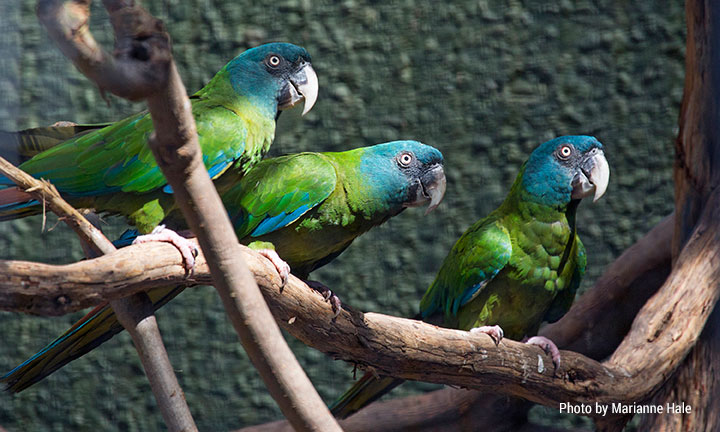Blue-headed macaw
Primolius couloni

At the Zoo
South American Tropical Rainforest and Aviary
Fascinating Facts
- Blue-headed macaws are considered “mini-macaws,” a group that includes any species of macaw that reach a total length of less than 20 inches.
- This macaw gets their name from their striking blue head on an otherwise mostly green body.
- Blue-headed macaws have been observed visiting clay-licks. The soil there potentially provides sodium as well as protection against toxins naturally found in their diet.
Physical Characteristics
The blue-headed macaw is 16 inches in length, with the large powerful beak and long pointed tail characteristic to all macaws. They have a blue head, green wings and body, with maroon on the upper portion of the tail.
Habitat/Diet
These birds are found in the southwest Amazon and adjacent east Andean foothills of Peru, Bolivia, and Brazil. They prefer humid evergreen forests found along rivers and in clearings from lowlands up to 5100 ft. They are arboreal, diurnal, and herbivorous.
Social Behavior
The blue-headed macaw is not usually found in flocks like other parrots, but is instead typically seen in groups of 2-4 individuals. Their call is higher-pitched and softer than that of most other macaws.
Status In The Wild
Vulnerable – IUCN 2012
This species is listed as Vulnerable due to pressure on their small population from exploitation for the pet trade and deforestation from the logging industry and mining/drilling for gas.
Current conservation efforts are on protecting wild areas where they live.
In the future, conservationists hope to improve population data, increase international trade prevention, and identify further essential land for protection.
